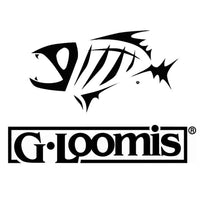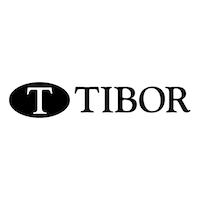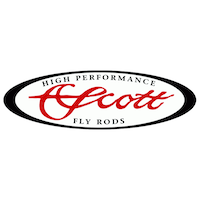"Give me a lever long enough and a fulcrum on which to place it, and I shall move the world.”
It’s not often that I get to refer to a famous scientist who lived over 2000 years ago when writing about fly fishing, but this quote is apt. Levers are basic tools that have been in use for millennia. They are important to fly fishing, specifically in playing and landing fish, in ways that many anglers don’t fully grasp. By understanding how levers act when fighting fish, in relation to your fly rod and the hooks you use, you will become a more effective angler.
When talking with customers at Orlando Outfitters, the use of a fly rod as a lever when fighting fish comes up regularly. The conversation typically goes something like this:
Customer: “I think it’s much easier to land fish with a fly rod than with a spinning rod.”
Me: “Why is that?”
Customer: “Fly rods are so much longer and act as a lever you can use to tire out the fish and make them go where you want. You just don’t have the same control or power with a spinning rod."
 While it is true that a fly rod acts as a lever, the fact is that the lever is very much in favor of the fish. When using a lever, the position of the fulcrum, the pivot point, determines how forces are applied. Imagine a seesaw with the fulcrum exactly in the center. If two children of equal weight are sitting on each end and the seesaw is horizontal, then they will be perfectly balanced. If the pivot point were moved to a foot from one end and eight feet from the other, a small child on the long end could easily lift a full sized adult on the short end.
While it is true that a fly rod acts as a lever, the fact is that the lever is very much in favor of the fish. When using a lever, the position of the fulcrum, the pivot point, determines how forces are applied. Imagine a seesaw with the fulcrum exactly in the center. If two children of equal weight are sitting on each end and the seesaw is horizontal, then they will be perfectly balanced. If the pivot point were moved to a foot from one end and eight feet from the other, a small child on the long end could easily lift a full sized adult on the short end.
The fulcrum on a fly rod will be where your upper hand is holding the rod. When you are fighting a fish, this will be in the middle of the handle, maybe 9” from the butt end. If you are using a 9’ fly rod with no flex to it held perpendicular to the direction in which the fish is pulling, the fish will have the use of a lever over 8’ long to work with. Assuming you have the butt of the rod planted against your stomach or locked against your arm, you will have just a few inches. In terms of force applied, you are at a distinct disadvantage.
Fortunately, fly rods bend. This bend shortens the effective length of the lever, referred to as the lever arm. The lever arm is defined as the perpendicular distance from the pivot point, or fulcrum, to the line of action of the force. In the case of a fly rod, with a fish on the line, the line of action will quite literally be the line stretching away from the tip of your fly rod.
With a straight, non-flexible rod perpendicular to the pull of the fish, the lever arm will be the distance from your hand to the tip of the rod. Pointing the rod tip down towards the fish shortens the lever arm. Bend in the fly rod also works to shorten the lever arm.
 When fighting smaller fish, the lack of leverage really isn’t an issue. You are so much stronger than the fish that it can be brought to hand fairly easily. It can even be helpful when fighting a fish with a light tippet. Holding the rod tip high gives you less leverage, making it difficult for you to pull hard enough to break the tippet, and also takes advantage of the shock absorbing qualities of the soft rod tip.
When fighting smaller fish, the lack of leverage really isn’t an issue. You are so much stronger than the fish that it can be brought to hand fairly easily. It can even be helpful when fighting a fish with a light tippet. Holding the rod tip high gives you less leverage, making it difficult for you to pull hard enough to break the tippet, and also takes advantage of the shock absorbing qualities of the soft rod tip.
To effectively fight larger fish, you will have to take physics into account. If you have been saltwater fishing or chasing larger freshwater species with heavy tippet for any length of time, you will be familiar with the strip strike, and what is often referred to with “down and dirty” fish fighting tactics.
 Setting the hook, especially a larger diameter hook, in the jaw of a larger fish, requires more force than you can reliably generate with the tip of the rod held high. A strip strike is accomplished by stripping the line through the guides with your line hand while moving the whole rod, which is pointed towards the fish, back and swinging the rod tip away from the fish. If it is done correctly, the line ends up tight with the rod still pointed at a low angle towards the fish. The rod can be angled up but a low angle to the side may work better.
Setting the hook, especially a larger diameter hook, in the jaw of a larger fish, requires more force than you can reliably generate with the tip of the rod held high. A strip strike is accomplished by stripping the line through the guides with your line hand while moving the whole rod, which is pointed towards the fish, back and swinging the rod tip away from the fish. If it is done correctly, the line ends up tight with the rod still pointed at a low angle towards the fish. The rod can be angled up but a low angle to the side may work better.
This type of hookset, with the rod pointed towards the fish accomplishes a couple things. First, it shortens the lever arm, giving you much more leverage against the fish than if the rod were held at a high angle. Second, it allows you to set the hook with the stiff butt of the rod instead of the flexible tip. By using your line hand to draw the line tight you keep slack out of the system and, in conjunction with the angle and position of the rod, you can fine-tune how much pressure you apply. Just be ready to raise the rod tip and clear the line when the fish runs.
 When fighting fish, a similar angle, down and to the side, “down and dirty”, will help you to apply maximum pressure and land fish as quickly as possible. Raising the rod tip high and putting a huge bend in the rod looks great for pictures but, because of the poor leverage this gives you as well as the bend of the rod, it doesn’t do much to the fish. When a fish jumps, starts a long run or does something else that requires you to let up pressure, raise the rod tip and let the shock-absorbing rod tip do its job and keep pressure on the fish. Just remember to get “down and dirty” when the danger or breaking the fish off is over.
When fighting fish, a similar angle, down and to the side, “down and dirty”, will help you to apply maximum pressure and land fish as quickly as possible. Raising the rod tip high and putting a huge bend in the rod looks great for pictures but, because of the poor leverage this gives you as well as the bend of the rod, it doesn’t do much to the fish. When a fish jumps, starts a long run or does something else that requires you to let up pressure, raise the rod tip and let the shock-absorbing rod tip do its job and keep pressure on the fish. Just remember to get “down and dirty” when the danger or breaking the fish off is over.
When fighting fish, pay attention to the angle of the fish in the water. Leverage comes into play here as well. When a fish is hooked, it is fighting against a force pulling against the front of its body. The most difficult angle for it to hold will be a pull directly to the side. A fish will tire more quickly if you work to change the angle to pull the fish back and to the side. Let up tension when the fish is facing you so you don’t pull the hook out of its mouth. When a fish is running directly away, either work to get it turned or raise the rod tip and let it have some line until it stops and you can turn it to the side again.
Changing the angle on fish is where the extra length of the fly rod over a spinning rod does help out. Even though you may not be able to apply as much leverage with the rod at a higher angle, the ability to move the rod tip a long way from the center allows you to change the angle on the fish to apply maximum leverage at the angle of your choosing. Once you change the angle you can put the fish off balance and lower the rod again to apply maximum pressure.
With large fish, like full grown tarpon, the fighting angle is so important that the tactic is often to get close to the fish so you can control the angle of the line to the fish more effectively. In a case like this, the captain and angler need to work together closely to keep the boat where it needs to be, anticipate the movement of the fish, and maintain a good angle on the fish while applying lots of pressure.
Landing larger fish with a fly rod is a balancing act that requires practice to perfect. When a fish gets in very close, the rod tip has to come up and the fish gains a leverage advantage. It is often better to back up, if that is a possibility, and slide the fish into the shallows or to someone who is helping to land it. You will have very little control and will be able to exert minimal pressure when raising the rod tip so you can grab the leader and land a large fish. To make matters worse, your rod is never in more danger of breaking than when the rod is pointed at an angle away from a strong fish.
 Another area where leverage really comes into play is at the other end of the line, in the fish’s mouth. It has long been known that anglers lose more fish with long shank hooks. One reason is that the long shank can, depending on where the hook is set, create a lever, pulling the hook out of the fish’s mouth. If a 2 ½ inch long hook is set in the corner of a fish’s mouth, there can easily be a 1 ¾ inch section of shank extending past the fish’s jaw. If the angle is wrong, the point at which the hook wedges against the fish’s mouth becomes the fulcrum and the portion extending outside acts as the lever. It won’t take much tension for the hook to either bend, break or pull out. During a prolonged fight, it is likely that the angle will be “wrong” for at least a little while.
Another area where leverage really comes into play is at the other end of the line, in the fish’s mouth. It has long been known that anglers lose more fish with long shank hooks. One reason is that the long shank can, depending on where the hook is set, create a lever, pulling the hook out of the fish’s mouth. If a 2 ½ inch long hook is set in the corner of a fish’s mouth, there can easily be a 1 ¾ inch section of shank extending past the fish’s jaw. If the angle is wrong, the point at which the hook wedges against the fish’s mouth becomes the fulcrum and the portion extending outside acts as the lever. It won’t take much tension for the hook to either bend, break or pull out. During a prolonged fight, it is likely that the angle will be “wrong” for at least a little while.
The way around this is to use flies with shorter shank hooks. If you are a fly tyer, many flies traditionally tied on long shank hooks can be modified to use shorter hooks. It may take some experimenting to get the look and action right, but I believe it’s worth the trouble.
In recent years, many new patterns have been developed to tie large profile flies that incorporate articulations. These articulated patterns move very nicely in the water but they have another benefit. Because the bulk of the fly is not tied on the hook, tyers are free to use hooks with very short shanks.
Understanding the part leverage plays in fighting and landing fish will help, but you still have to put it into practice. Setting up an experiment so you can see these concepts in action is relatively easy. Put a medium sized cardboard box on the ground and add a little weight. Water bottles work well. Attach the end of your leader to a corner, step back and see how difficult it is to move the box at different distances and angles.
You can also use the edge of the cardboard box to try hooks of different lengths. Push the hook through the top of the opened box (the fish’s mouth) with a portion of the shank extending past the end of the cardboard. See how easy it is to bend or dislodge the hook at different angles and depths.
The best way to learn a skill is to do it. The next time you go fishing, think about the angles and see how they affect the fish you are fighting. You don’t need a large fish on the end of the line in order to see the results of fighting more effectively, and the experience will be invaluable when you hook a larger-than-average fish. Understanding how levers work once a fish eats, and knowing how to apply the concepts will help you to hook, play and land fish more effectively.















Comments